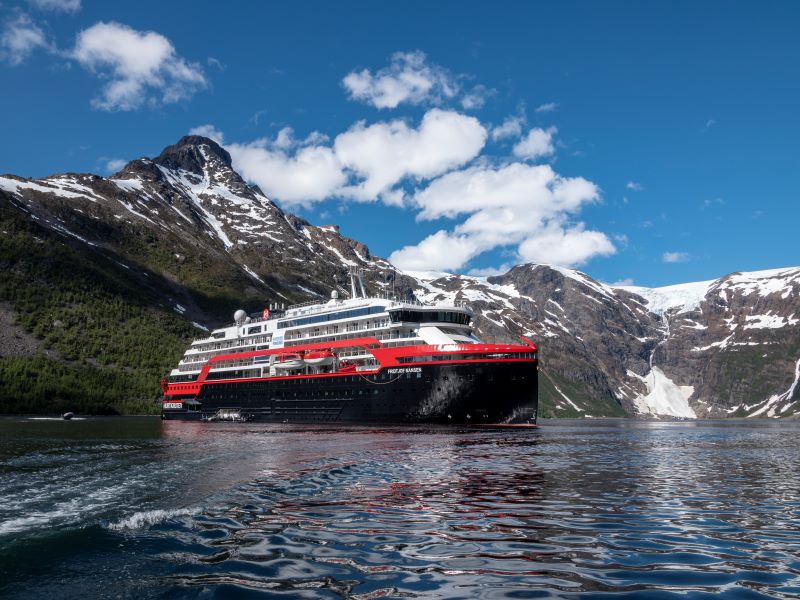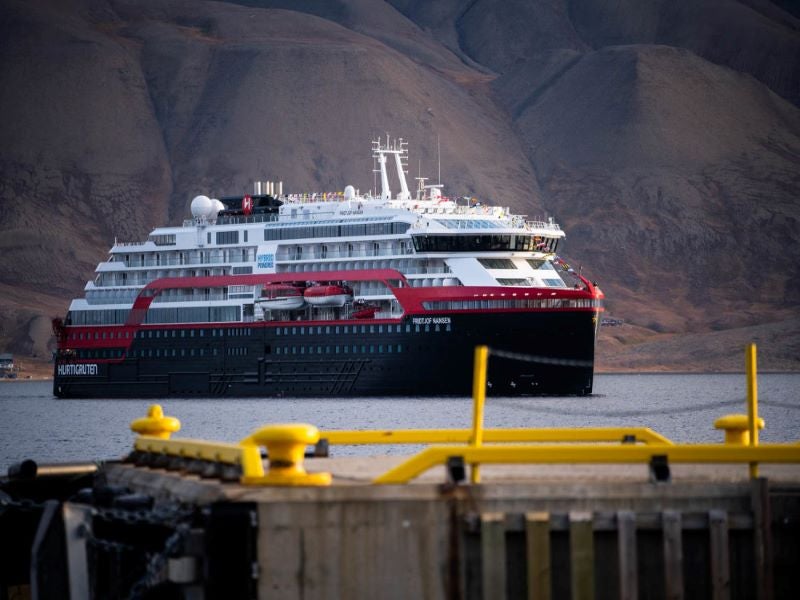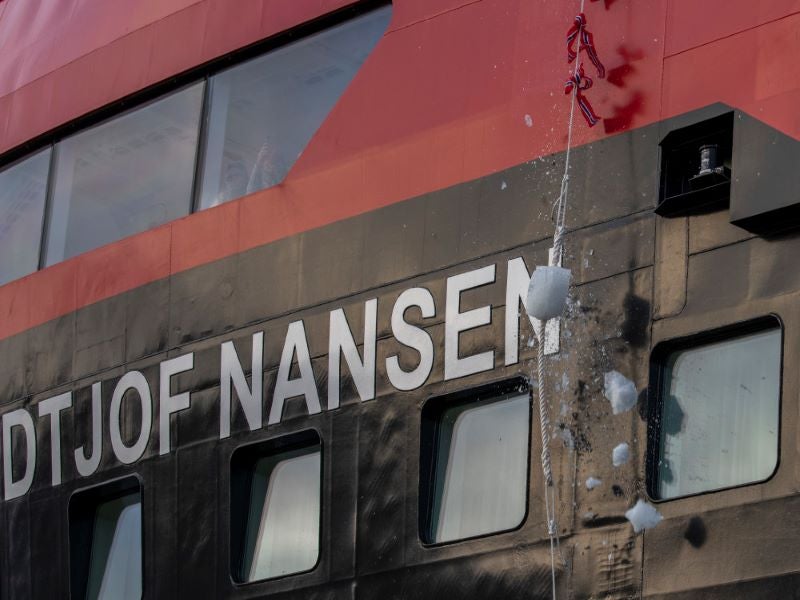The MS Fridtjof Nansen is a new hybrid-powered, PC-6 ice-class expedition vessel owned by Hurtigruten Expeditions, a cruise line based in Norway. The advanced, environment-friendly ship was built by Green Yard Kleven at its Kleven Yards in Norway.
The vessel was named after the famous Norwegian explorer Fridtjof Nansen during a naming ceremony at Longyearbyen on the archipelago of Svalbard in September 2021. The naming ceremony was the world’s northernmost naming ceremony held for a passenger ship.
The battery-hybrid powered vessel is also the first cruise ship to be registered in Longyearbyen.
MS Fridtjof Nansen’s design and features
The MS Fridtjof Nansen’s design is similar to that of its sister ship, the hybrid-powered MS Roald Amundsen. It has a length of 140m, a beam of 23.6m and a gross tonnage of 20,889t. The vessel offers 265 staterooms and suites to accommodate up to 530 guests for normal expeditions and 500 persons for Antarctic expeditions.
The cruise ship features a rich and comfortable interior design with Scandinavian materials such as oak, granite, birch and wool. The design includes stylish cabins and public areas. All cabins of the ship face outside with private balconies in 50% of them. The suites in the aft of the ship feature private outdoor hot tubs.
Accommodation onboard MS Fridtjof Nansen
The expedition suites aboard the ship are large, well-appointed cabins with expansive windows and balconies in most of the suites. Some of the expedition suites are equipped with a private outdoor hot tub. Located in the upper and mid decks, the expedition suites can accommodate up to four people each.
The expedition suites come in six types with the largest being the XL suite that has two layouts – one with a balcony and the other without it. The Corner suite also offers two options, including one with a balcony and hot tub and the other without a private balcony.
The Large suites feature 35m² (376.73ft²) of space with a private balcony. It is designed to accommodate guests with wheelchairs while the Suite cabin offers space of up to 28m² (301.38ft²). Each expedition suite comes with a bathroom, a TV and a double bed.
The Arctic Superior class cabins have a comfortable design with most of the cabins featuring a private balcony except the outside cabins on the middle and lower decks. There are six types of Arctic Superior class cabins, which are spread over the upper, middle, and lower decks of the ship. The cabins, which offer flexible sleeping arrangements and sofa beds, can accommodate up to four guests.
The Polar Outside cabins are located on the middle and lower decks with windows, flexible sleeping arrangements, and a TV.
Dining and other facilities
The hybrid-powered MS Fridtjof Nansen offers onboard dining in three restaurants. The passengers can choose from a variety of dining options, from Norwegian and Nordic traditional cuisines to international and local cuisines.
The Aune restaurant on deck six is the main dining room, while the Fredheim, which is also on the same deck, serves as the informal international meeting place. The Lindstrøm located on deck nine is a speciality restaurant offering low-key yet modern Norwegian Nordic cuisine.
The MS Fridtjof Nansen also features an elegant Explorer Lounge on deck ten, offering space to relax. A large gym and a wellness centre are located on deck seven, while the indoor and outdoor observation decks with the aft infinity pool and hot tubs are located on decks six and seven. Another observation deck along with an outdoor gym and a running track is located on deck 11. Deck ten houses the pool deck with bar and sauna facilities.
Furthermore, the cruise ship features expedition equipment such as kayaks, Blueye underwater drones, and expedition boats. The Nansen Science Center is one of the important areas of the ship and serves as the onboard headquarters for the expedition team of specialists and modern-day explorers to guide the passengers on each voyage. The science centre also offers an educational and entertaining venue for guests and crew to have a better understanding of the expedition areas.
MS Fridtjof Nansen’s engine and propulsion
The MS Fridtjof Nansen’s hybrid propulsion system integrates diesel engines and battery units to reduce fuel consumption by approximately 20% and carbon dioxide (CO2) emissions by 20%. The vessel is powered by four Rolls-Royce Bergen B33:45 diesel engines in combination with two large battery units. The ship can achieve a cruise speed of 15kt.
It is also fitted with two azipull propellers with integrated permanent magnet (PM) technology, two large tunnel thrusters, stabilisers, winches and electric systems.
Introduced in the market in 2017, the PM technology can provide highly efficient propulsion over a wide speed range. The compact design of the main propulsion thruster also reduces the space required in the thruster room.
The expedition ship utilises the latest automation and control systems, including the Rolls-Royce Unified Bridge, which provides a comfortable, safe and efficient working environment. The Rolls-Royce Unified Bridge provides a user-friendly ship bridge environment, including levers, consoles and software interfaces.
Itinerary of MS Fridtjof Nansen
The MS Fridtjof Nansen was initially scheduled to sail for Antarctica during the 2021-2022 season. The plans were, however, cancelled due to travel restrictions imposed due to the Covid-19 pandemic. It will sail on its inaugural voyage from Hamburg, Germany, in January 2022, offering expedition cruises to the coast of Norway.
Contractors involved
The engine, azipull propellers and control systems of the ship were supplied by Rolls-Royce. Rolls-Royce Commercial Marine (RRCM) business was acquired by Norwegian technology company Kongsberg in 2019. The sale included the propulsion, deck machinery, and automation and control product lines.
Kongsberg continues to supply products from Rolls-Royce’s Bergen Engines through a trading arrangement.






